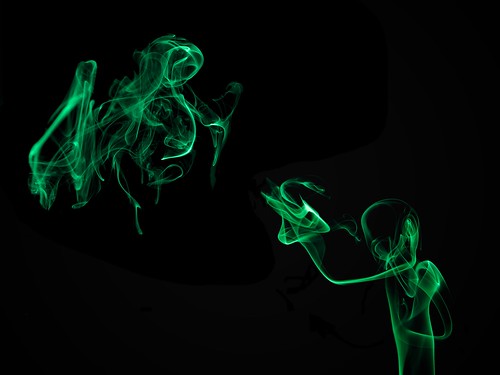 |
| "Magic Beanstalk" |
I've been meaning to try out photography for a while, and last weekend I gave it a shot. There are many tutorials on the Internet, but the basic steps I followed were as follows:
1) Set up in a place with a dark background. A black background isn't necessary, but a dark background helps.
2) Set up your off-camera flash towards the side and slightly behind. Zoom in to your maximum zoom setting on the flash - I used the 105mm setting on mine. Position the flash so that it lights the smoke and. I used just the one flash and no reflector. Some tutorials I saw suggested using a snoot on the flash, but I found that with the flash head zoomed in and the flash angled away from the background it wasn't really necessary. You can add color in post, but colored gels on your flash also works.
3) I used incense for the smoke - it works well.
4) We want to let the background go completely black, so use your highest sync speed and an aperture of f/8 or so to maximize depth of field.
5) Use manual focus and pre-focus on where the smoke will be.
6) Light up the incense and fire away! The smoke shapes are going to be random so take lots of exposures.
7) Post-processing can include removing some of the smoke trails, contrast and adding color. Composites are also fun!
Here's a link to some of the results!
 |
| "Fighting His Demons" |